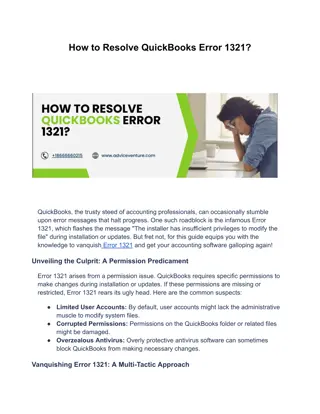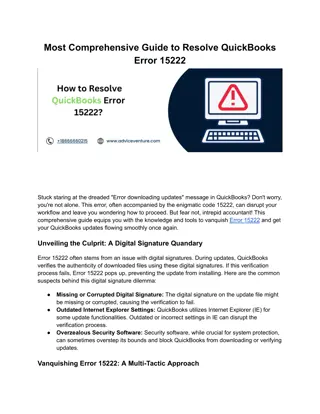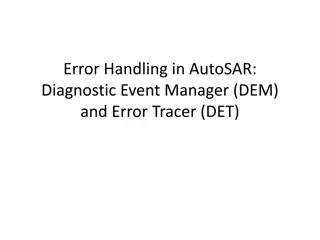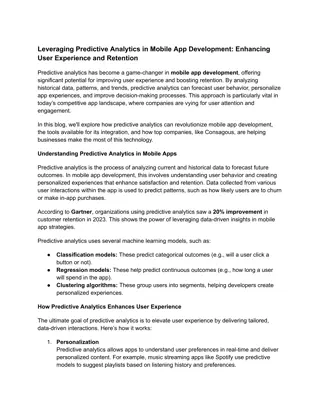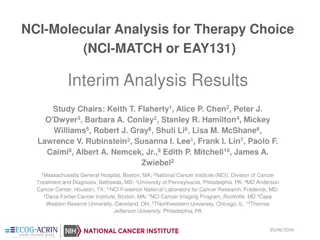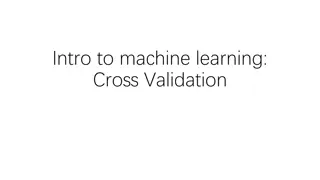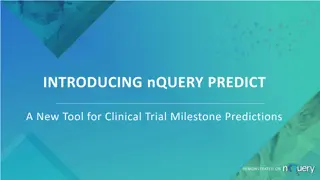
Data Analytics: Descriptive, Diagnostic, Predictive, Prescriptive
Explore the world of data analytics through descriptive, diagnostic, predictive, and prescriptive analytics. Learn how to interpret data to make informed decisions and predictions in various scenarios.
Download Presentation

Please find below an Image/Link to download the presentation.
The content on the website is provided AS IS for your information and personal use only. It may not be sold, licensed, or shared on other websites without obtaining consent from the author. If you encounter any issues during the download, it is possible that the publisher has removed the file from their server.
You are allowed to download the files provided on this website for personal or commercial use, subject to the condition that they are used lawfully. All files are the property of their respective owners.
The content on the website is provided AS IS for your information and personal use only. It may not be sold, licensed, or shared on other websites without obtaining consent from the author.
E N D
Presentation Transcript
PREDICTIVE ANALYSIS Design of Experiments
TYPES OF DATA ANALYTICS Descriptive Analytics Diagnostic Analytics Predictive Analytics Prescriptive Analytics
DESCRIPTIVE ANALYTICS Quite literally, a description of the data Example A company sold 90,000 widgets in the first quarter of the year and another 124,000 widgets in the second quarter of the year Descriptive Analytics tell us how many widgets were sold in the first and second quarter of the year, and by virtue, the first half of the year
DIAGNOSTIC ANALYTICS This is the why behind the numbers, but it is still a what happened style of analysis Using our example A data analyst can determine if certain sales and marketing efforts contributed to the number of sales. Was there a targeting marketing campaign? Was there a regional increase? Were new salespeople hired? Did the company change the incentives for the sales department?
PREDICTIVE ANALYTICS Here we look at the data and predict what might happen next Prediction with 100% certainty is not the goal (think weather) Thoughtful analysis of existing data points help predict a likely occurrence
PRESCRIPTIVE ANALYTICS The next step in the sequence is to make a recommendation for next steps based on information determined in the predictive analysis phase Version 2.0 etc.
HOW MANY VARIATIONS? There are 3 configurations of 4 different variables Variables are noted as A, B, C & D Configurations are noted as A1, A2 & A3 3 to the 4thpower = 81 possible configurations Is it a good idea to test all possible configurations? Let s propose a logical subset to examine
VOLUNTEERS! Nine sample students One official measurement person One organizer/data collector
DESCRIPTIVE ANALYTICS REMEMBER, it s a description of the data How far did the paper airplanes go? Distances Average Distance Etc.
DIAGNOSTIC ANALYTICS REMEMBER, this answers the why question What happened? Launch angle Strength of thrower Quality of construction Measure from what point (front vs. back) Etc.
DESIGN OF EXPERIMENTS Controllable input factors X variables Design variables A, B, C & D Uncontrollable input factors Y variables Predicted variables and those that were uncovered during the initial experiment Responses Measured output
PREDICTIVE ANALYTICS REMEMBER, here we look at the data and predict what might happen next Look for outliers Look for correlation
PRESCRIPTIVE ANALYTICS REMEMBER, the next step in the sequence is to make a recommendation for next steps based on information determined in the predictive analysis phase What should we test next?




